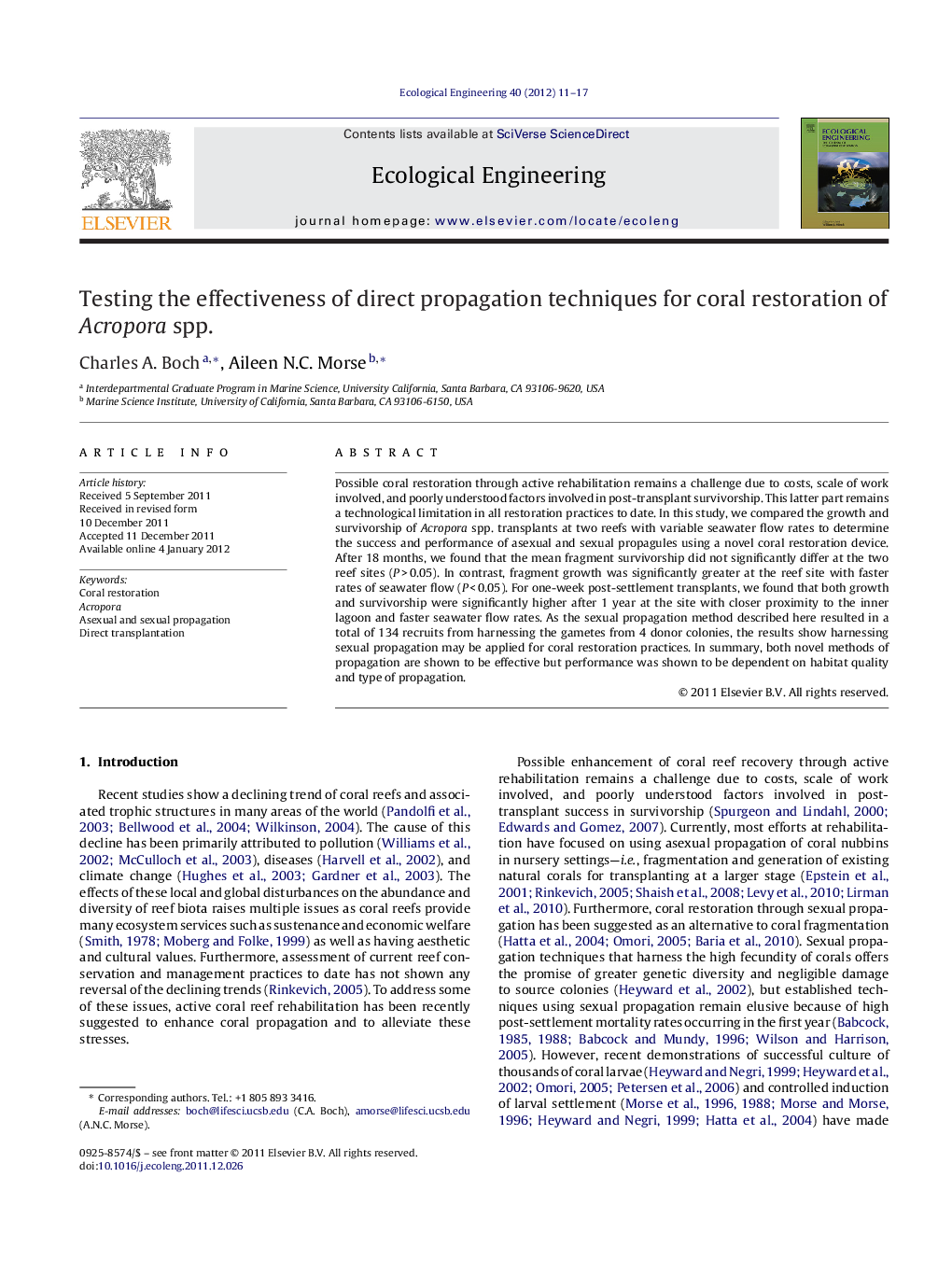| Article ID | Journal | Published Year | Pages | File Type |
|---|---|---|---|---|
| 4389943 | Ecological Engineering | 2012 | 7 Pages |
Possible coral restoration through active rehabilitation remains a challenge due to costs, scale of work involved, and poorly understood factors involved in post-transplant survivorship. This latter part remains a technological limitation in all restoration practices to date. In this study, we compared the growth and survivorship of Acropora spp. transplants at two reefs with variable seawater flow rates to determine the success and performance of asexual and sexual propagules using a novel coral restoration device. After 18 months, we found that the mean fragment survivorship did not significantly differ at the two reef sites (P > 0.05). In contrast, fragment growth was significantly greater at the reef site with faster rates of seawater flow (P < 0.05). For one-week post-settlement transplants, we found that both growth and survivorship were significantly higher after 1 year at the site with closer proximity to the inner lagoon and faster seawater flow rates. As the sexual propagation method described here resulted in a total of 134 recruits from harnessing the gametes from 4 donor colonies, the results show harnessing sexual propagation may be applied for coral restoration practices. In summary, both novel methods of propagation are shown to be effective but performance was shown to be dependent on habitat quality and type of propagation.
► In situ seawater flow rates are tested on the growth and survivorship of Acropora fragment and sexual propagation. ► Seawater flow rate was found to have significant effects on fragment growth but not survivorship. ► Seawater flow rate was found to have significant effects on both growth and survivorship of sexual recruits. ► Direct propagation of fragments and coral recruits are found to be relatively successful.
